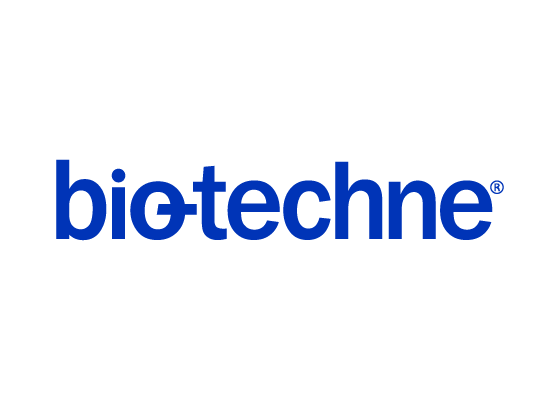Proteome Profiler Human XL Oncology Array Best Seller
R&D Systems, part of Bio-Techne | Catalog # ARY026
Contains 4 membranes-each spotted in duplicate with 84 different cancer-related antibodies

Key Product Details
Assay Procedure
Refer to the product datasheet for complete product details.
Briefly, relative expression levels of human cancer-related proteins in samples can be determined using the following procedure:
- Prepare membrane and incubate with prepared sample
- Incubate the membrane with Detection Antibody Cocktail
- Incubate the membrane array with Streptavidin-HRP
- Develop the membrane array with Chemi Reagents 1 and 2
- Expose the membrane array to autoradiography film
View Printable Protocol
Kit Contents
- Rectangular 4-Well Multi-dish
- 4 Human XL Oncology Array nitrocellulose membranes spotted with 84 different antibodies to cancer-related proteins
- Array Buffer 4
- Array Buffer 6
- Chemi Reagent 1
- Chemi Reagent 2
- Detection Antibody Cocktail, Human XL Oncology Array
- Streptavidin-HRP
- Transparency Overlay Template
- Wash Buffer Concentrate (25X)
Other Supplies Required
Reagents
- Pipettes and pipette tips
- Gloves
- Plastic container with the capacity to hold 50 mL (for washing the arrays)
- Plastic transparent sheet protector (trimmed to 10 cm x 12 cm and open on three sides)
- Plastic wrap
- Absorbent lab wipes (KimWipes® or equivalent)
- Paper towels
- X-ray film (Kodak BioMax™ Light-1) or equivalent
- Flat-tipped tweezers
Equipment
- Rocking platform shaker
- Microcentrifuge
- Autoradiography cassette
- Film developer
- Flatbed scanner with transparency adapter capable of transmission mode
- Computer capable of running image analysis software and Microsoft Excel
Other Supplies Required for Cell Lysate Samples
- Phosphate-Buffered Saline (PBS)
- Lysis buffer 17
- Aprotinin
- Leupeptin (Catalog # EI002)
- Pepstatin (Catalog # EI003)
Other Supplies Required for Tissue Lysate Samples
- Protease Inhibitor Cocktail
- Igepal® CA-630
- Sodium deoxycholate
- Sodium dodecyl sulfate
Procedure Overview
R&D Systems Protocol for Multiple Analyte Detection Using the Proteome Profiler™ Human XL Oncology Array Kit, Panel A (Catalog # ARY026)
- Add 2 mL of Array Buffer 6 to each well of the supplied 4-Well Multi-dish.
- Place each array membrane in a separate well of the 4-Well Multi-dish
- Incubate for one hour on a rocking platform shaker.
- Add 0.5 mL Array Buffer 4 to each sample.
- Adjust volume of each sample to final volume of 1.5 mL with Array Buffer 6.
- Replace the Array Buffer 6 in each well of the 4-Well Multi-dish with prepared samples.
- Incubate overnight at 2 °C to 8 °C on a rocking platform.
- Wash each array membrane 3 times with 1X Wash Buffer in a separate container.
- Wash each well of the 4-Well Multi-dish with 1X Wash Buffer.
- Add 30 µL of Detection Antibody Cocktail to 1.5 mL of Array Buffer 4/6 for each array.
- Pipette 1.5 mL diluted Detection Antibody Cocktail into each well of the 4-Well Multi-dish.
- Return each array membrane to the 4-Well Multi-dish containing diluted Detection Antibody Cocktail.
- Incubate for one hour on a rocking platform shaker.
- Wash each array membrane 3 times with 1X Wash Buffer in a separate container.
- Wash each well of the 4-Well Multi-dish with 1X Wash Buffer.
- Add 2 mL of diluted Streptavidin-HRP to each well of the 4-Well Multi-dish.
- Place the array membrane in the diluted Streptavidin-HRP solution.
- Incubate for 30 minutes on a rocking platform shaker.
- Wash each array membrane 3 times with 1X Wash Buffer in a separate container.
- Place the array membrane on a plastic sheet protector.
- Pipette 1 mL of the prepared Chemi Reagent Mix evenly onto the membrane.
- Cover the membrane with the top sheet of the plastic protector
- Incubate for 1 minute.
- Blot off excess Chemi Reagent Mix.
- Wrap the membrane and sheet protector in plastic wrap.
- Place the wrapped array membrane in an autoradiography film cassette and expose to X-ray film.
Loading...
Loading...
FAQs for Proteome Profiler Human XL Oncology Array
Loading...
